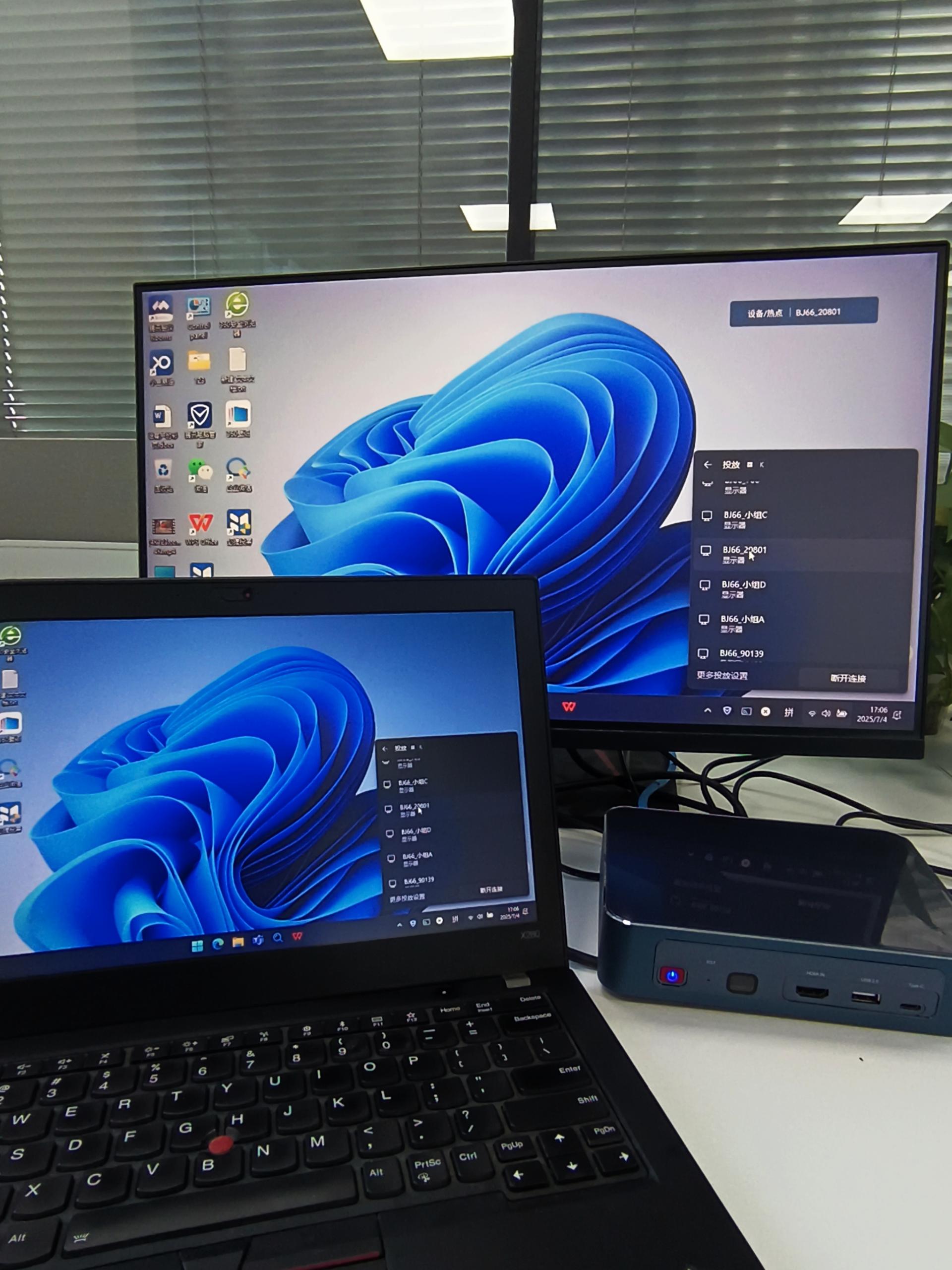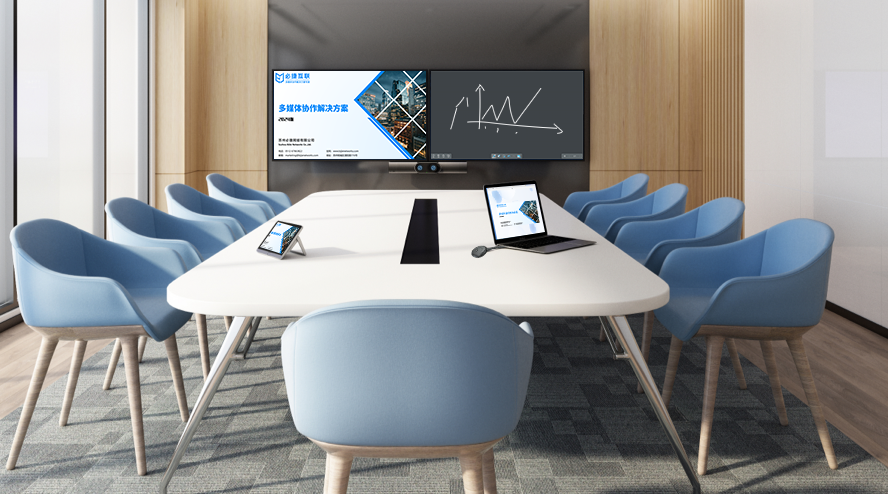PC Screen Mirroring: An Efficient Classroom Display Solution
This PC screen mirroring solution is custom-designed for educational scenarios. Compatible with both Windows and macOS computers, it allows for a seamless transfer of courseware, videos, and lab data to a large teaching display. Paired with exclusive teaching functions, it’s perfect for primary and secondary school classrooms, university labs, and vocational training, making lessons more efficient and interactive.
Universal System Compatibility, Zero Classroom Connection Barriers
Whether it’s a teacher’s Windows laptop or desktop, or an Apple MacBook, they all connect smoothly. The connection methods are designed to match the pace of a lesson:
- Fast Wireless Connection: Use the native system functions (“Project” on Windows and “Screen Mirroring” on macOS). After finding the large teaching display, the connection is made in 1-2 seconds without installing any plugins, so you can be ready to go in just 30 seconds before class starts.
- Wired Backup: It comes with an adapter for HDMI, Type-C, and DP interfaces, so older computers can be plugged in and used immediately, avoiding the hassle of an unstable wireless signal.
- One-Click Memory: You can preset a “classroom mode” for frequently used teaching computers. A pop-up will automatically remind you to mirror after you turn on the computer, eliminating the need for repeated steps. With a compatibility rate of over 98%, from office laptops to high-performance teaching computers, you won’t have to delay a lesson because of device compatibility issues.
Clear and Stable Transmission, No Distortion in Content
It supports 4K Ultra HD mirroring. When you display a biology diagram or a physics lab setup, the details and textures are clearly visible. When you play a teaching video or an animated lesson, the picture is smooth with no ghosting, and the colors are true to life. It’s equipped with exclusive classroom anti-interference technology that automatically avoids crowded Wi-Fi frequencies on campus. The transmission latency is as low as 15ms, and the audio-video synchronization error is less than 8ms. Even when you switch presentations or play a dynamic lab demo, everything is in sync in real time, so your teaching flow isn’t interrupted by lagging.
Exclusive Teaching Functions, Empowering Classroom Interaction
Core Teaching Functions
- Courseware Annotation Linkage: A teacher can use a mouse or a writing pad on their computer to annotate key points on the courseware (like circling a formula or adding a note), and the annotations are synchronized to the large teaching display in real time. Students sitting in the back of the classroom can see them clearly. It supports various colors and pen thicknesses, making highlights more intuitive.
- Split-Screen Comparative Teaching: You can split the computer screen into a “courseware area” and a “materials area” and mirror them to the large display at the same time. For example, you can have the original text on the left and supplementary materials on the right, or lab steps on the left and safety precautions on the right, which makes explanations more efficient.
- Content Capture and Save: When you explain an important concept, you can quickly capture the mirrored screen and it will automatically be timestamped. After class, you can organize it into a “key highlights collection” and share it with students in a class group for review.
Teacher-Student Collaboration
- Student Presentations: Students can mirror their homework or problem-solving processes from their computers to the large display, and the whole class can critique it. A teacher can grade and annotate it on the spot, which enhances student participation. It supports multiple student computers taking turns mirroring content, so there’s no need to switch devices repeatedly during a group report.
- Lab Data Sync: In a university lab, a teacher can run lab software on their computer and mirror data curves and lab results to the large display in real time. Students can then discuss and analyze the data without having to crowd around a small computer screen.
- Remote Teaching Compatibility: In a hybrid class, a computer can mirror local courseware to the large classroom display, while a secondary screen mirrors the video feed of remote students. This balances in-person explanation with online interaction, so the integrity of the lesson isn’t affected.
Smart Management, Effortless Teaching Maintenance
- Access Control: An administrator can set up a “teaching mirroring whitelist” from a school backend, allowing only a teacher’s computer and designated student computers to connect, which prevents unauthorized devices from disrupting a class. A substitute teacher can mirror content with a temporary authorization code generated by the academic office, and the permission automatically expires after class.
- Device Monitoring: You can view the operational status of the mirroring devices in each classroom in real time (including the number of connections, signal strength, and battery level). It also supports remote restarting and firmware upgrades, so no on-site maintenance is required from a tech teacher, which reduces management costs.
- Usage Statistics: It automatically records data like the number of times a class has mirrored content, the types of devices used, and the average mirroring duration. It generates a usage report for educational devices, which provides data to support school equipment updates and resource allocation.
Installation and deployment are simple. You just need to connect the mirroring receiver to the large teaching display and the campus network to use it, with no need to modify the existing classroom wiring. Whether for daily classroom teaching, lab sessions, or open house demonstrations, this PC screen mirroring solution can precisely meet the needs of education, making a computer an efficient teaching tool that connects teachers and students.